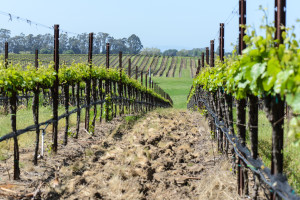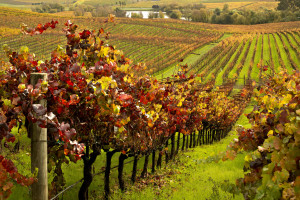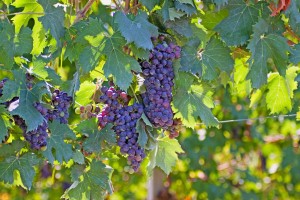Today we have a Conference Preview from Remi Cohen. Remi’s session is entitled “The Role of Viticulture in the Evolution of Napa Valley Wines.” Read on to hear how she describes this session!
Napa Valley is a leader in viticulture and winemaking, producing some of the highest quality wines in the world. As all truly great wines reflect their origins in the vineyard, the evolution of Napa Valley winemaking can also be understood by examining changes in vineyard practices over the years. Join us on Thursday, August 11 at 3:15 p.m. as we explore how vineyard practices have evolved over the last 50 years, and how these changes have affected the wines produced in the region.
Napa Valley has a rich and storied history of viticulture that began when George Calvert Yount was the first to plant grapes in Napa Valley in 1839 using cuttings from the Sonoma mission. The earliest vineyards utilized simple designs based on missionary or European styles. This was mostly head-trained vines on a wood post and fields were planted to mixed varietal blends. Commercial wineries flourished from the 1860’s, when Charles Krug created the first commercial winery in 1861, through to Prohibition.
After the Repeal of Prohibition, the Napa Valley wine and vineyard industry witnessed another resurgence, and one that has not stopped as Napa continues to flourish as a leader in global viticulture and winemaking.
In 1968, Napa County created America’s First Agricultural Preserve, a land-zoning ordinance that established agriculture and open space as the best use for the land in the fertile valley and foothill areas of Napa County. This set the stage for the development of an industry over the next fifty years. It is interesting to explore how vineyard practices have changed over the course of the next fifty years, and how that has affected wine styles in Napa Valley.
A typical vineyard in Napa Valley in 1975 had vines that were minimally-trained, with vigorous vines that with minimal canopy management. The vines and rows were spaced far apart, and most of the rows were oriented north to south or east to west. The vineyard floor was heavily cultivated by discing. Often the vineyard was dry-farmed with minimal inputs. Minimal grape thinning occurred. Harvest occurred once the grapes achieved 22 to 23 Brix.
By 1995, a lot had changed in viticulture in Napa Valley. Vineyard acreage had grown by over 30% and Cabernet Sauvignon acreage had nearly doubled. Vines were tightly-trained to a vertically-shoot positioned trellis and heavily manicured. Vine shoots are tucked, hedged, have laterals and even leaves removed around the clusters. The vine and row spacing narrowed dramatically so vine density per acre was much higher. The vineyard floor often had permanent cover crops or at least permanent cover crops in the alternate rows.
Drip irrigation was used in most vineyards. Significant crop thinning was used to achieve stylistic and yield goals. Harvest was at a much higher Brix, often ranging from 24 Brix all the way to 29 or even 30 Brix.
These dramatic changes in viticultural practices made a big impact on the wine styles that were produced from these different vineyard settings. In my presentation, we will explore how these different viticultural practices impacted wine style from 1975 to 1995. Further, we will look at how current vineyards are being planted, and why, from using traditional techniques to more modern approaches. What does a typical vineyard look like in 2015? What did a typical Napa Cab taste like in 1975, 1995, and how has that affected the style of wines we see in Napa now?
Remi’s session, “The Role of Viticulture in the Evolution of Napa Valley Wines” will be presented on Thursday, August 11 at 3:15 pm as part of SWE’s 40th Annual Conference. The session will include the opportunity to taste a range of wines from iconic Napa Valley producers that exemplify the differences in vineyard practices and wine style.
Remi Cohen is the Vice President and General Manager of Lede Family Wines, encompassing Cliff Lede Vineyards in the Stags Leap District of Napa Valley and FEL Wines in the Anderson Valley. In her role, Cohen directs the winemaking process from vineyard to bottle and is responsible for top quality, small-lot winemaking that is expressive of appellation and terroir. In addition, she is a brand ambassador and oversees the distribution of all wines throughout the domestic and international markets.
Born and raised in East Brunswick, New Jersey, Cohen migrated to the West Coast and attended U.C. Berkeley where she received a degree in molecular and cellular biology. Subsequently, she enrolled in the Viticulture and Enology program at U.C. Davis, where she received her Master’s Degree. Later, Cohen completed her M.B.A. at Golden Gate University in San Francisco.
Cohen is an advocate of sustainable farming practices and has hosted lectures on sustainability and winegrowing at venues including U.C. Berkeley, U.C. Davis, the Commonwealth Club, Society of Wine Educators, and the American Society of Enology and Viticulture. In addition to writing a column for Vineyard & Winery Management, Cohen is on the board of the Napa Valley Grapegrowers and president of the Stags Leap District Winegrowers Association.



